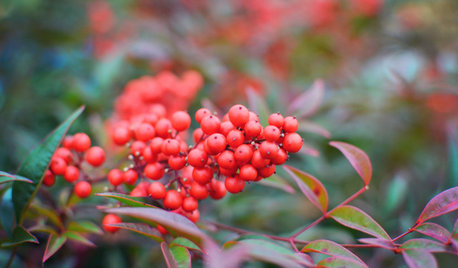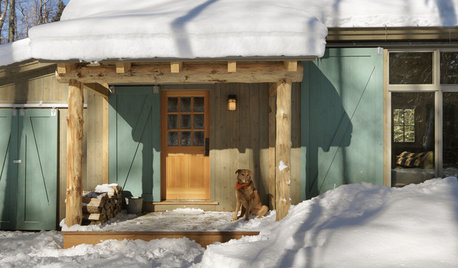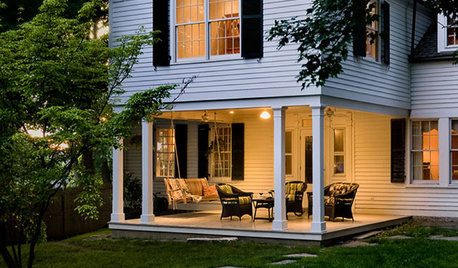seeking advice on my compost pile
Doug Powell
9 years ago
Related Stories

GARDENING GUIDESGet on a Composting Kick (Hello, Free Fertilizer!)
Quit shelling out for pricey substitutes that aren’t even as good. Here’s how to give your soil the best while lightening your trash load
Full Story
FARM YOUR YARDAdvice on Canyon Farming From L.A.'s Vegetable Whisperer
See how a screened garden house and raised beds help an edible garden in a Los Angeles canyon thrive
Full Story
LIFE9 Ways to Unclutter Your Holiday
If piles of gift wrap, boxes and extra items are weighing you down, clear the way to enjoy a serene holiday with these decluttering tips
Full Story
GARDENING GUIDESMid-Atlantic Gardener's January Checklist
Scatter berries while ye may, be kind to your fair-feathered friends and try a time-saving compost trick that will keep you out of the cold
Full Story
LIFEA Therapist’s Guide to Dealing With Conflict at Home
Piles of laundry and dirty dishes are a part of cohabitating. Here’s how to accept it and move forward
Full Story
STORAGE10 Smart Storage Hacks for Shoe Lovers
If your heels, flats, sneakers and boots are piling up in your foyer and bedrooms, restore order with these savvy storage hacks
Full Story
RUSTIC STYLE10 Cabin Rental Basics for City Slickers
Stay warm, dry and safe while you’re enjoying winter cabin life with this valuable advice
Full Story
DECORATING GUIDES7 Home Purchases Worth the Splurge
Make buyer's remorse over furniture, textiles and more a thing of the past with this wise purchasing advice
Full Story
SELLING YOUR HOUSEThe Latest Info on Renovating Your Home to Sell
Pro advice about where to put your remodeling dollars for success in selling your home
Full Story
FALL GARDENINGMake This Fall’s Garden the Best Ever
Learn the most important tip for preventing buyer’s remorse, plus get more valuable buying and planting advice
Full StoryMore Discussions








lisanti07028
Doug PowellOriginal Author
Related Professionals
Reading Landscape Architects & Landscape Designers · Fort Lee Landscape Architects & Landscape Designers · Jennings Landscape Architects & Landscape Designers · Waunakee Landscape Architects & Landscape Designers · Anderson Landscape Contractors · Brandon Landscape Contractors · Darien Landscape Contractors · Westchester Landscape Contractors · Kingsburg Landscape Contractors · Fresno Decks, Patios & Outdoor Enclosures · Hialeah Decks, Patios & Outdoor Enclosures · Hot Springs Village Decks, Patios & Outdoor Enclosures · Norman Decks, Patios & Outdoor Enclosures · Puyallup Decks, Patios & Outdoor Enclosures · Wildomar Decks, Patios & Outdoor Enclosuresgrubby_AZ Tucson Z9
Kimmsr
drmbear Cherry
toxcrusadr
Doug PowellOriginal Author
Kimmsr
Doug PowellOriginal Author
toxcrusadr
User
toxcrusadr
FrancoiseFromAix
sand_mueller
sand_mueller
Lloyd
Doug PowellOriginal Author
User
Doug PowellOriginal Author
Kimmsr